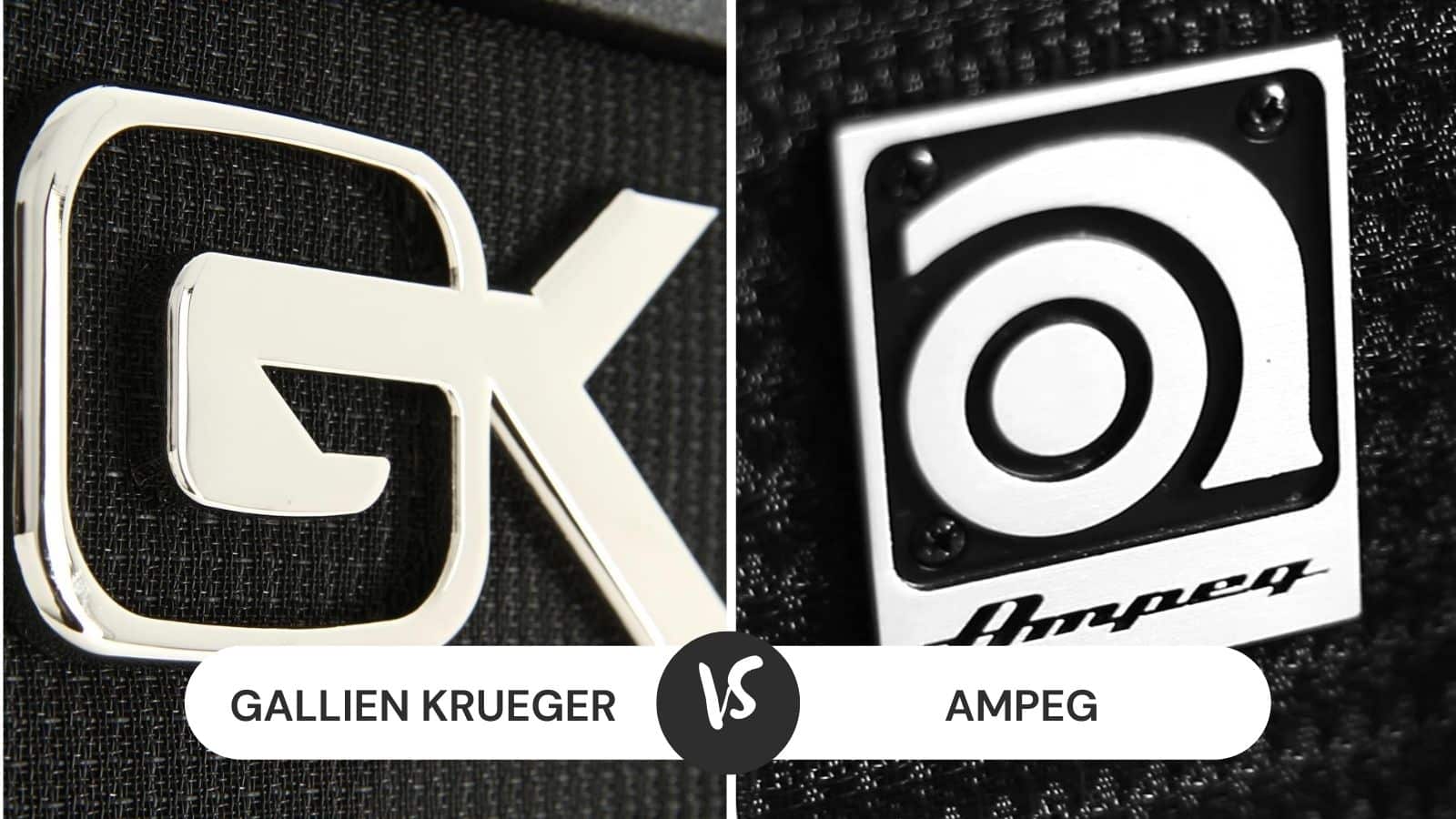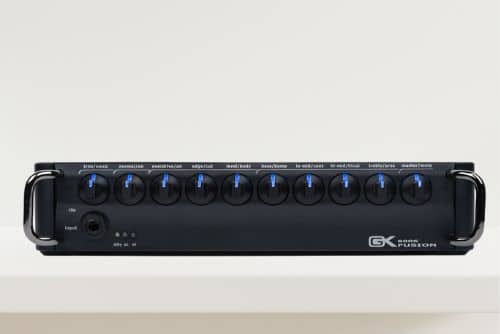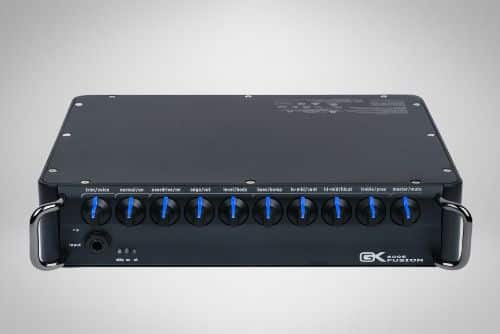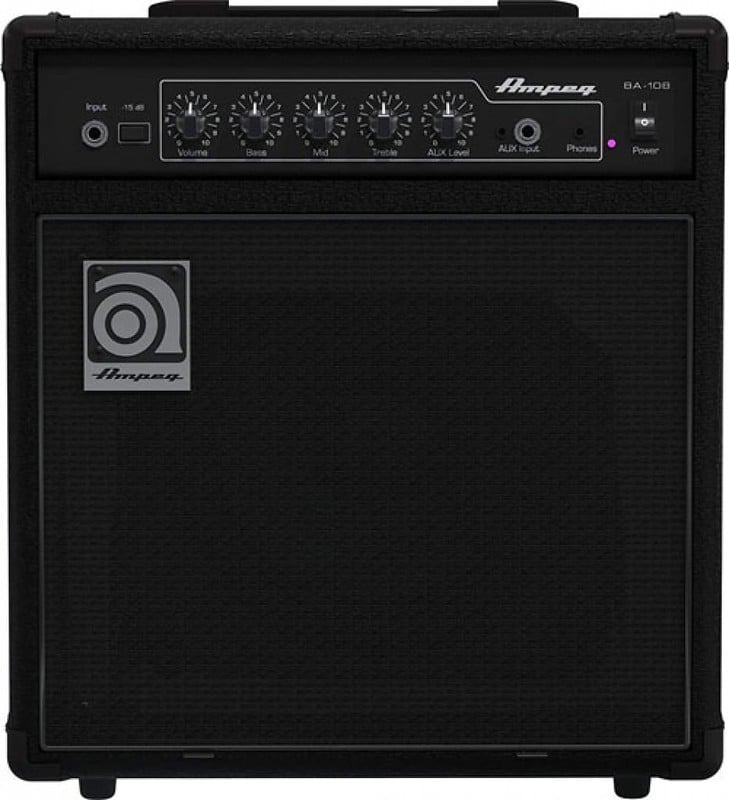
The bass amp is an important musical instrument device that uses electrical power to create low-pitched instruments, including double bass and bass guitar, which has sound loud enough to be heard by the audience.
Choosing a reliable bass amp is quite complicated as you’ve to consider the output, audio quality, precision, and clarity.
Usually, people choose Gallien Krueger as well as Ampeg for purchasing the bass amps because these two are the most popular manufacturers with high-quality amps.
Overview Comparison of Gallien Krueger and Ampeg
| Features | Gallien Krueger | Ampeg |
|---|---|---|
| Channels | Single channel | Single channel |
| EQ | Four-band EQ with active configuration | Three-band EQ |
| Effects loop | Yes | Yes |
| Weight | 5.5 pounds | 12.7 pounds |
Gallien Krueger
This is a well-known manufacturer of speaker cabinets and bass amps. Founded back in 1968, the company operates in California and first designed the amps with transistors rather than tubes.
As far as the bass amps are concerned, Fusion 800S remains the most advanced and popular bass amp. The amp is designed with a batmobile-like sleek design. This is because it has a minimalistic design with a flat black design.
The bass amp weighs only 5.5 pounds. The front panel of the amp is a bit complex because every control is designed with two functions. Every rotary control glows in white or blue color to signal the activation of a specific function.
For this reason, the bass amp is challenging to understand for beginners and other musicians who are accustomed to using simple layouts. On top of everything, this bass amp promises incredible tonal options.
1. Design
The bass amp has a voice dial on the left side, and this dial also works as an EQ shaper to re-voice the amps. In addition, there is an overdrive section. It promises a clean tone, which makes it suitable for a variety of music styles.
There are two other controls as well, including level/body and edge/cut, which help tune the sound by optimizing the overdrive channel. There is a four-band EQ section that includes four controls for treble, bass, low-mid, and high-mid.
In addition, the front panel of the bass amp is designed with indicator lights that show the power and temperature – there is also a mute/master control.
The backside of the amp has a ground lift and pre/post switch, with which you can connect the third-party tuners, twist lock the speakers, and has an effective send-return.
In addition, there is a headphone port, input, and aux port to engage the drive channels with the help of an LF-1 footswitch (the switch has to be purchased separately).
The circuit board of the amp is made from gold-plated connectors, which promises reliable and pure sound.
‘The overdrive sections complete the tone-shaping experience and deploy an interconnection system that prevents sound errors that are usually caused by the temperature and vibration extremes.
2. Sound
This bass amp is designed to offer a pleasant experience to the users but many users have been disappointed in the beginning. However, if you connect it with voice control, the lower highs and high mids will result in a crispy and edgy sound.
The amp has a cleaner tone and the tone settings promise sufficient warmth without any muddiness and pillow-ness.
The overdrive of the bass amp has some sonic qualities, which makes it suitable to retain the string sounds and keep the signals clean.
The amp is designed with tubes to promise mild compression and amazing softness.
Overall, the amp can create a punchy and clean tone with firm and solid characteristics, particularly in the lower end. As far as the treble and midrange are concerned, they are pretty tame, so you can experiment with a variety of sounds.
It is designed with a class-D power design, which helps shape the tones for multiple genres.
In addition, the overdrive section of this amp adds brightness and excitement to the tone without adding any muddiness and dirt – it’s a great feature for musicians.
When it comes down to the voicing filters, there are bump, presence, and contour push buttons available to help you customize the sound.
Pros
- Exceptional musical overdrive
- In-depth shaping of tones
- Retains the sonic qualities
- Clean signals with firm notes
Cons
- Complicated control layout
Ampeg
Ampeg is a US-based bass amp manufacturer that’s been around since 1946. Currently, the brand is working under Yamaha.
Ampeg specializes in bass amps but they have made guitar amps, pickups, bass guitars, electric guitars, and double basses as well.
Recently, they launched the BA-108 v2 combo bass amp, which became the most popular option. The bass amp is designed for people who want affordable, compact, and feature-rich amps.
This is a single-channel amp designed with special controls for aux level, volume, and a three-band EQ switch.
In addition, the amp is integrated with a -15dB pad switch, which makes it a promising choice to complement passive bass and active bass.
The amp has a small footprint but it’s extremely durable because it has been designed with Tolex coverage and has black metal corners to create a sleek appearance. In addition, the amp has a steel chassis build, promising durability.
1. Design
To begin with, the amp is designed with a smaller footprint and has a steel construction. It weighs around 10.7kg and has a black design, which looks pretty classic. The amp also has a black mesh grille that looks amazing and there is a brand logo.
The amp has been designed with rubber feet that promise flat installation and you can also tilt it at 60-degrees with a wedge monitor to ensure better protection.
The front side of the amp has an aux and headphone jack, so you can jam with the backing tracks.
In addition, these jacks are perfect to jam with external tracks. Honestly speaking, this is a basic amp because there is no HF mute, XLR outputs, and hi/lo tone shaping.
There are three 12AX7s in the amp, so you can customize the one to fit different music genres – it is suitable for live performances as well.
In addition, the DI outputs are extremely balanced, so you can connect them to the live soundboards and recording consoles.
2. Sound
Many people think that the small footprint of the amp will negatively influence the sound output but it works fine in the smaller rooms. A small round can be easily filled with music, particularly if you are making acoustic music.
It has a powerful and reliable EQ and the flat tone is pretty neutral. The low end of the amp promises solid music outcomes and highs won’t create any tin-like sounds. In addition, the mids will not bark.
The amp has transparent settings, which means it will add minimum to zero color to the p-style bass, particularly the passive bass. In addition, you can increase the bass to add boom to the music.
When placed in the tilt-back position, you will be able to find the sweet spot in the music. With the treble and mids, the signals will be extremely present as they can capture the nuances.
Its EQ tends to lean toward the primal tendencies of the bass amps in addition to offering clarity.
The amp is a suitable choice for percussive and slap players as you can use the maximum treble.
There is a pad switch in the amp, which helps cool down the jets of an active bass – it ensures that the speakers are not overpowered, which means it’s more convenient to dial the tone on a passive bass.
On the other hand, it overloads the active bass on a specific frequency range.
Pros
- Feature-rich
- Captures the nuances
- Compact and portable
- Higher value for money
Cons
- Doesn’t have advanced features like XLR and HF mute
The Final Verdict
Both companies have a wide range of bass amps available but the mentioned two are extremely popular and versatile. The Gallien Krueger amp is a suitable choice for recording and performing at a larger scale since it has higher sound output.
However, the Ampeg amp is only suitable for smaller rooms, given the smaller footprint.



